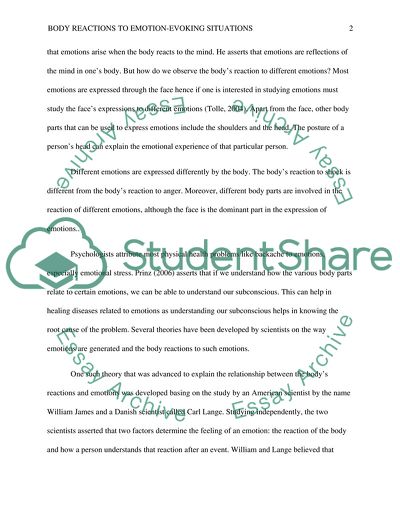Cite this document
(Body Reactions to Emotion-Evoking Situations Research Paper Example | Topics and Well Written Essays - 1500 words, n.d.)
Body Reactions to Emotion-Evoking Situations Research Paper Example | Topics and Well Written Essays - 1500 words. https://studentshare.org/anthropology/1772558-keeping-the-body-in-mind-field-based-report
Body Reactions to Emotion-Evoking Situations Research Paper Example | Topics and Well Written Essays - 1500 words. https://studentshare.org/anthropology/1772558-keeping-the-body-in-mind-field-based-report
(Body Reactions to Emotion-Evoking Situations Research Paper Example | Topics and Well Written Essays - 1500 Words)
Body Reactions to Emotion-Evoking Situations Research Paper Example | Topics and Well Written Essays - 1500 Words. https://studentshare.org/anthropology/1772558-keeping-the-body-in-mind-field-based-report.
Body Reactions to Emotion-Evoking Situations Research Paper Example | Topics and Well Written Essays - 1500 Words. https://studentshare.org/anthropology/1772558-keeping-the-body-in-mind-field-based-report.
“Body Reactions to Emotion-Evoking Situations Research Paper Example | Topics and Well Written Essays - 1500 Words”. https://studentshare.org/anthropology/1772558-keeping-the-body-in-mind-field-based-report.


